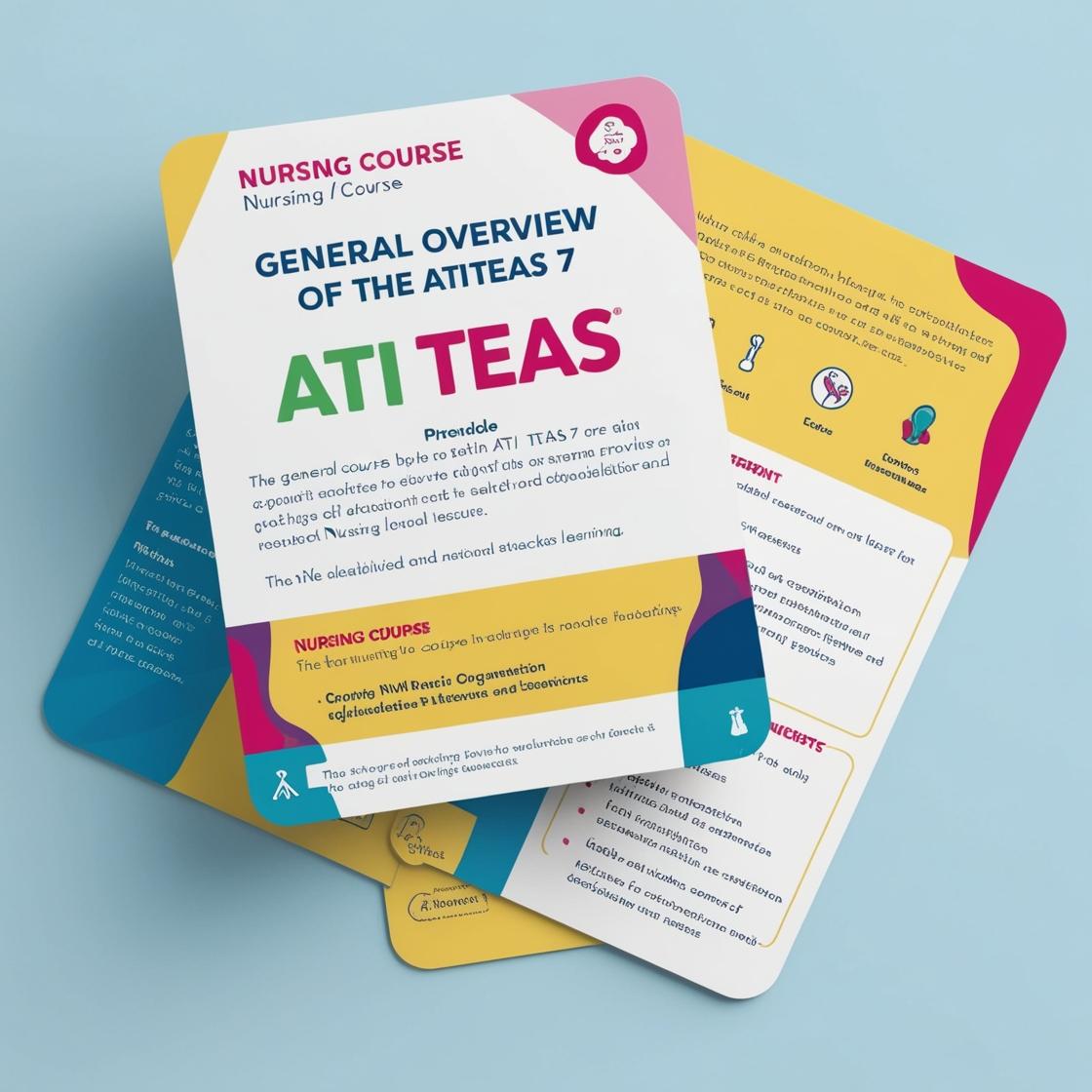ATI TEAS 7
TEAS Math Questions
1. Veronica is making a holiday schedule. 35% of staff members will be on vacation, and 20% of the remainder are certified to work. What percentage of the staff is certified and available?
- A. 0.07
- B. 0.13
- C. 0.65
- D. 0.8
Correct answer: A
Rationale: To find the percentage of staff certified and available, we first calculate the percentage of staff members not on vacation, which is 100% - 35% = 65%. Then, 20% of this group is certified to work, which is 20% of 65% = 0.20 * 65% = 13%. Therefore, Veronica has 13% of the staff certified and available to work. The correct answer is 0.13 (or 13%). Choice C (0.65) is incorrect because it represents the percentage of staff members not on vacation, not the percentage that is certified and available. Choice D (0.8) is incorrect as it is not the correct percentage of staff members certified and available. Choice B (0.13) is the correct answer, not choice A (0.07), as 0.07 represents 7%, not 13%.
2. If a person spends 1/4 of their day sleeping, how many hours do they spend sleeping?
- A. 6 hours
- B. 8 hours
- C. 4 hours
- D. 5 hours
Correct answer: A
Rationale: To calculate the number of hours a person spends sleeping when 1/4 of the day is spent sleeping, you need to find 1/4 of 24 hours. 1/4 of 24 hours is 6 hours, so the correct answer is A. Choice B (8 hours) is incorrect because it does not correspond to 1/4 of a day. Choice C (4 hours) is incorrect as it is half of the correct answer. Choice D (5 hours) is incorrect as it does not match the calculation for 1/4 of a day.
3. A set of patients is divided into groups: 1/2 in Group Alpha, 1/3 in Group Beta, and 1/6 in Group Gamma. Order the groups from smallest to largest.
- A. Alpha, Beta, Gamma
- B. Alpha, Gamma, Beta
- C. Gamma, Alpha, Beta
- D. Gamma, Beta, Alpha
Correct answer: C
Rationale: To determine the order from smallest to largest groups, we look at the fractions representing the groups. Group Gamma has 1/6, which is the smallest fraction, followed by Group Alpha with 1/2, and Group Beta with 1/3 being the largest fraction. So, the correct order is Gamma, Alpha, Beta. Choice A is incorrect because it lists Alpha, Beta, Gamma, which is the reverse order. Choice B is incorrect as it lists Alpha, Gamma, Beta, which is also incorrect. Choice D is incorrect as it lists Gamma, Beta, Alpha, which is not the correct order based on the fractions provided.
4. What percentage of the staff is certified and available to work in the neonatal unit during the holiday if 35% are on vacation and 20% of the remainder are certified?
- A. 0.07
- B. 0.13
- C. 0.65
- D. 0.8
Correct answer: A
Rationale: After 35% of the staff are on vacation, 65% remain. Since 20% of the remaining staff are certified, you multiply 0.20 by 65% (0.20 * 65% = 0.13 or 13%). Therefore, the correct answer is 0.13 or 13%. Choices C and D are incorrect as they do not represent the correct calculation for the percentage of certified staff available. Choice B is incorrect because it incorrectly states the calculated percentage as 0.13 instead of 0.07.
5. A man decided to buy new furniture from Futuristic Furniture for $2,600. Futuristic Furniture gave the man two choices: pay the entire amount in one payment with cash, or pay $1,000 as a down payment and $120 per month for two full years in the financing plan. If the man chooses the financing plan, how much more would he pay?
- A. $1,480 more
- B. $1,280 more
- C. $1,600 more
- D. $2,480 more
Correct answer: B
Rationale: To calculate the total cost with the financing plan, multiply $120 by 24 months to get $2,880. Adding the $1,000 down payment gives a total of $3,880. By comparing this total with the initial cost of $2,600 when paying in cash, the man would pay $1,280 more with the financing plan. Choice A, $1,480 more, is incorrect because it miscalculates the additional amount. Choice C, $1,600 more, is incorrect as it overestimates the extra cost. Choice D, $2,480 more, is incorrect as it significantly overstates the additional payment.
Similar Questions

Access More Features
ATI TEAS Premium Plus
$149.99/ 90 days
- Actual ATI TEAS 7 Questions
- 3,000 questions with answers
- 90 days access
ATI TEAS Basic
$99/ 30 days
- 3,000 Questions with answers
- 30 days access
